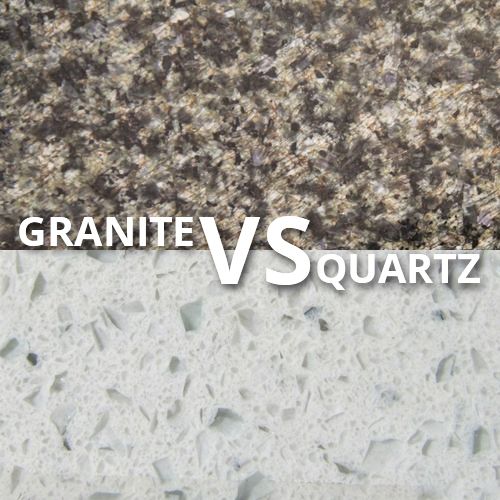
In the realm of kitchen design, one decision stands out above many others—the choice of your countertop material. Two materials that often take the spotlight are granite and quartz. In this blog, we’ll explore the world of kitchen countertops, focusing on the specific thickness of granite and quartz countertops, what to consider when choosing between them, and the installation process, including hob and sink cutouts and the vital role of backsplashes.
Selecting the Perfect Countertop
Granite:
Granite countertops are renowned for their natural elegance and durability. In this context, it’s crucial to consider their specific thickness, typically ranging from 16-18 mm (approximately 0.63-0.71 inches):
Color and Pattern: Granite boasts a wide array of colors and patterns, with each slab being unique. This variation provides the opportunity to find the perfect granite slab to match your kitchen’s aesthetic.
Durability: Despite their thinner profile, granite maintains its exceptional hardness, resists scratches, and can handle high temperatures, making it a valuable choice for active kitchens.
Maintenance: Granite countertops, while thinner, require regular sealing, typically every 1-2 years, to prevent staining and keep them looking their best.
Quartz:
Quartz countertops, engineered from natural quartz and resins, come in various thicknesses, often ranging from 15mm to 20mm (approximately 0.59-0.79 inches):
Color Consistency: Quartz countertops offer consistent color and pattern options, making it easier to match your kitchen’s design, regardless of the chosen thickness.
Durability: Irrespective of the specific thickness you opt for, quartz is highly durable and resilient against stains, scratches, and heat, making it an excellent choice for bustling kitchens.
Low Maintenance: Quartz countertops are non-porous and do not require sealing, offering an appealing maintenance advantage over granite.
The Installation Process
Whether you decide on granite or quartz, the installation process follows a similar path. Notably, the standard thickness for granite countertops in this range is 16-18 mm, while for quartz countertops, it varies from 15mm to 20mm:
Template Creation: The process begins with creating a template of your kitchen’s countertop area, which serves as a precise guide for cutting the stone to fit your kitchen’s unique layout.
Stone Selection: After the template is prepared, you choose your granite or quartz slab, ensuring that it complements your kitchen’s design and dimensions.
Hob and Sink Cutouts: Precise cutouts are made in the stone to accommodate your cooktop (hob) and sink. These cutouts are meticulously measured and cut to match the dimensions of your appliances. Standard hob cutout measurements typically range from 560mm to 864mm depending on the specific model. Sink cutouts vary based on sink size and type, such as under-mount or drop-in sinks.
Backsplash Installation: The backsplash, typically set to a height of 18 inches above the countertop, plays a crucial role in protecting your walls from splashes and stains. You can choose from various materials, including matching granite or quartz, tiles, or other decorative options, to enhance your kitchen’s aesthetics.
Edge Profile Selection: You can select from various edge profiles for your countertop, from modern to traditional styles. Common edge profiles include straight, bevelled, bullnose, and ogee.
Sealing (Granite): Granite countertops require sealing to prevent staining. The standard practice is to reseal granite every 1-2 years, although some sealants may last longer.
Installation: The countertop slab is precisely installed on your cabinets, ensuring a snug fit. It’s securely affixed in place, and any seams are meticulously joined for a seamless look. Standard countertop heights usually range from 36 inches to 38 inches from the floor to the countertop’s top surface. The choice of height should be based on your comfort and the standard cabinet height you’ve chosen.
The choice between granite and quartz often comes down to personal preference, taking into account your design style, lifestyle, and maintenance preferences. Both materials offer exceptional durability and timeless beauty, making them suitable for any kitchen. With the right material and professional installation, you’ll have a stunning and functional kitchen that becomes the heart of your home.
Thank you for reading, and stay tuned for more informative guides and tips on all things home and design.